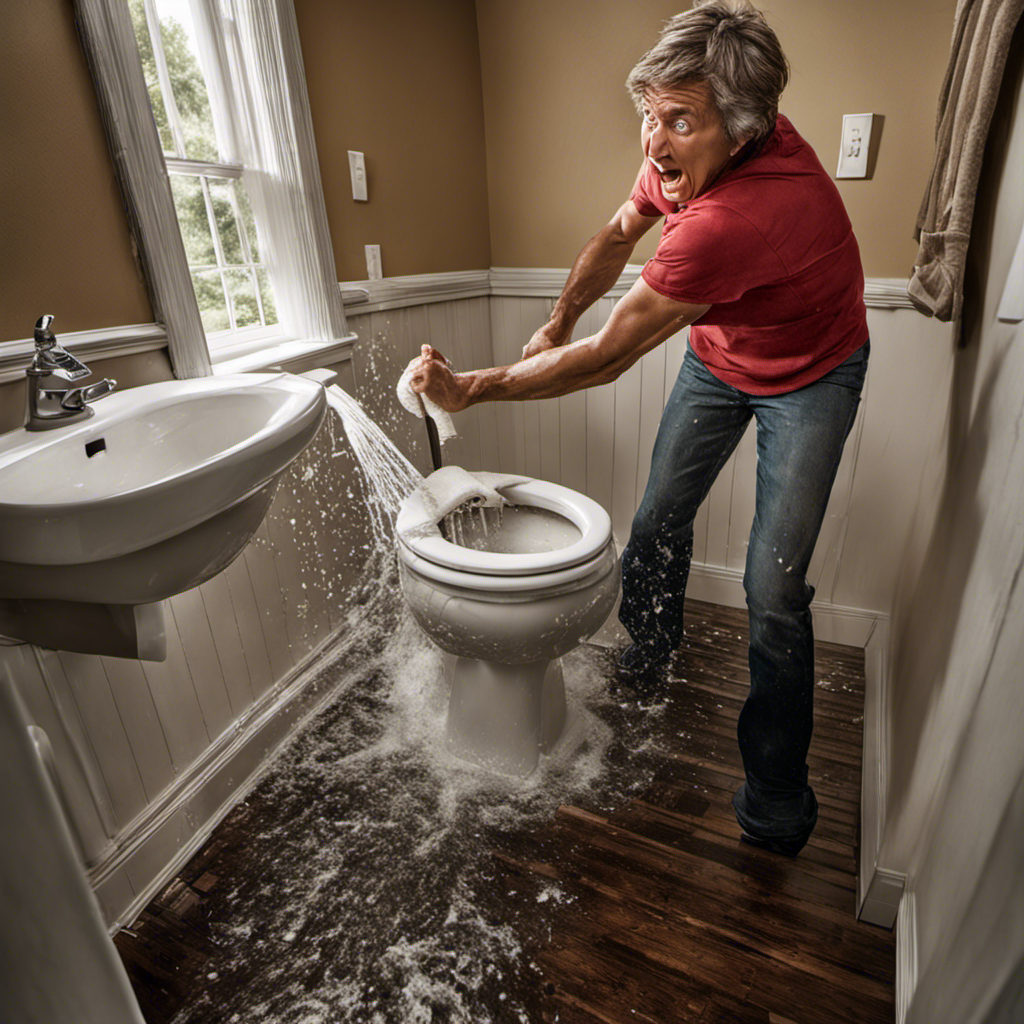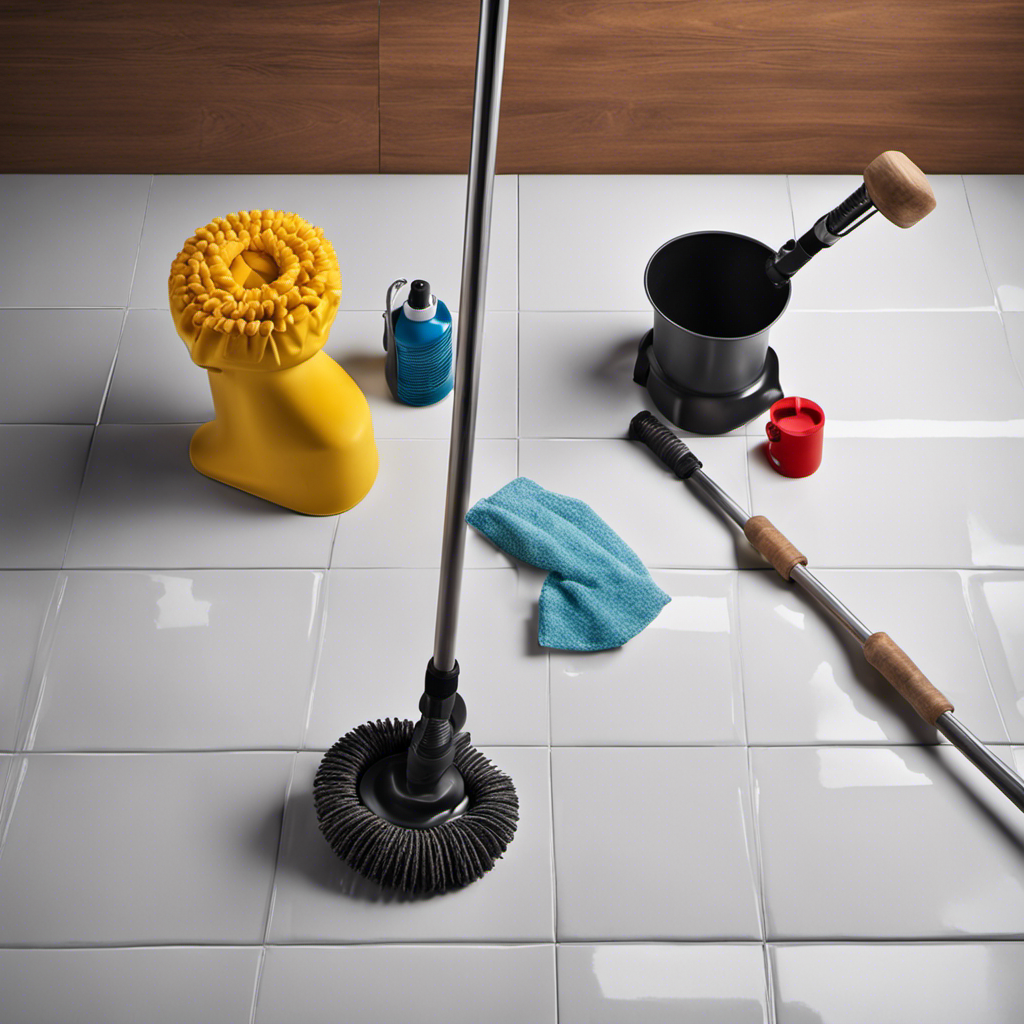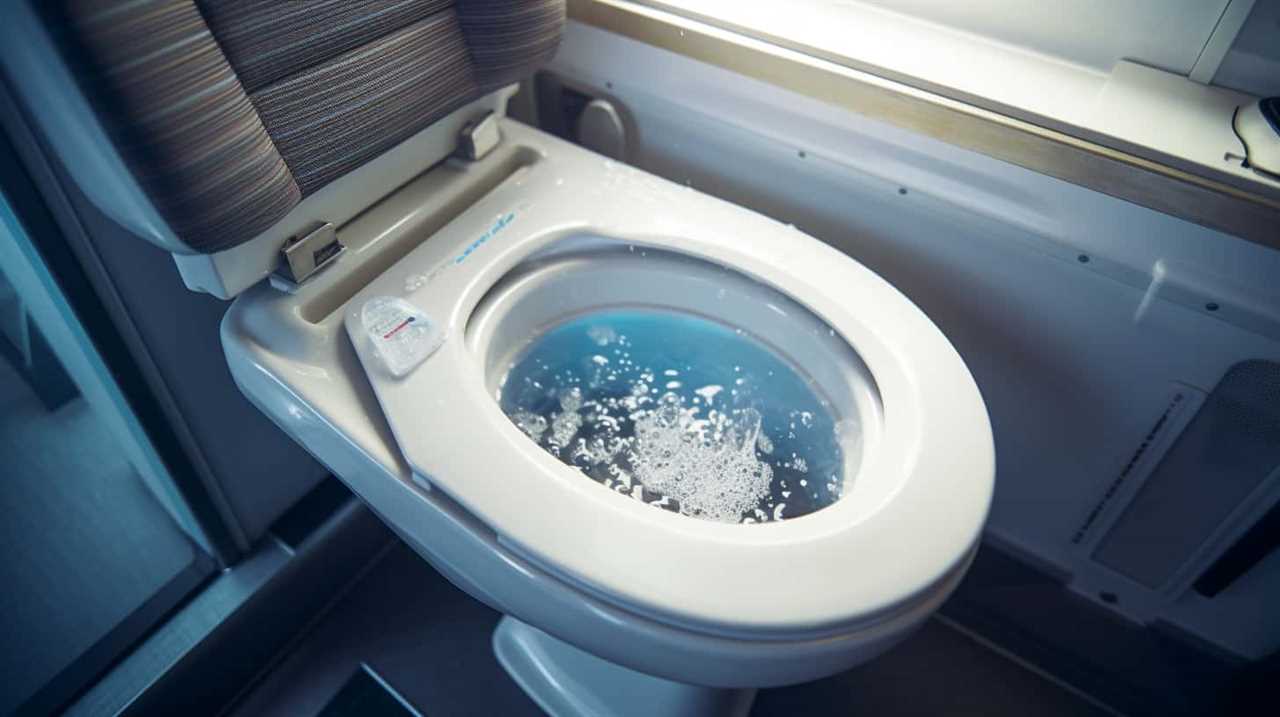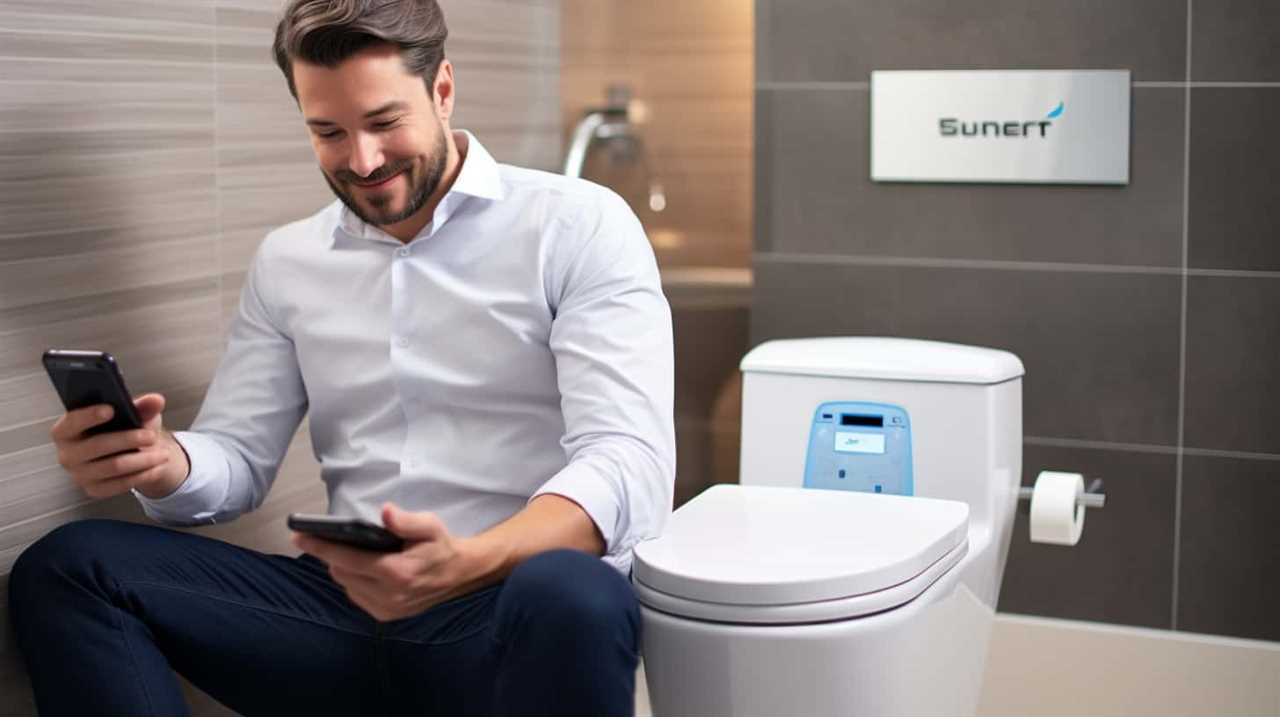As I stand here, staring at the water rushing over the edge of the toilet bowl, panic sets in. But fear not, for I have the solution to this messy predicament.
In this article, I will guide you through each step to take when your toilet decides to overflow. From assessing the situation to preventing future mishaps, I will provide you with the knowledge and expertise to handle this situation with confidence.
So, let’s dive in and tackle this problem head-on.
Key Takeaways
- Turn off the water supply to the toilet by locating the shut-off valve near the base of the toilet.
- If the water continues to overflow, call a plumber for professional assistance.
- Use a plunger or toilet auger to clear the blockage, and if unsuccessful, call a professional plumbing service.
- Put on gloves and protective clothing, clean up the mess using absorbent materials, and sanitize surfaces to prevent further damage and eliminate harmful pathogens.
Assess the Situation
You need to quickly figure out why your toilet is overflowing. When faced with this situation, it’s important to assess the situation promptly to prevent any further damage.
First, turn off the water supply to the toilet by locating the shut-off valve usually located near the base of the toilet. If the water continues to overflow, it’s crucial to call a plumber immediately for professional assistance.
While waiting for the plumber to arrive, try to determine the cause of the overflowing. Common causes include a clogged drain, a malfunctioning flapper valve, or a blocked sewer line. However, it’s essential to avoid attempting any repairs yourself, as this could potentially worsen the situation.
Trusting a professional plumber will ensure a proper diagnosis and resolution of the issue.
Stop the Water Flow
To stop the water flow, simply turn off the valve behind the toilet. This is the first step in preventing further water damage and potential flooding in your bathroom. Follow these steps to stop the water flow and avoid a plumbing disaster:
-
Locate the valve: The valve is typically located on the wall behind the toilet. It is usually a round handle or lever that you can turn clockwise to shut off the water supply.
-
Turn off the valve: Once you have located the valve, turn it clockwise until it is fully closed. This will stop the water from flowing into the toilet tank.
-
Check for leaks: After turning off the valve, inspect the area for any leaks. If you notice any water dripping or spraying, it may be necessary to call an emergency plumber for immediate assistance.
-
Assess the situation: Once the water flow is stopped, take a moment to assess the damage and determine if any professional help is needed to fix the issue and prevent further water damage.
Clear the Blockage
Once the blockage is cleared, make sure to flush the toilet to ensure that the water is flowing properly.
Clearing a blockage is an important step in toilet maintenance to prevent further overflow and damage.
If you are experiencing a blockage, there are a few methods you can try before calling for plumbing services.
Start by using a plunger, making sure to create a tight seal around the drain. Apply firm pressure and push up and down repeatedly.
If this doesn’t work, you can try using a toilet auger, which is a flexible rod with a corkscrew end. Insert it into the drain and rotate it to break up the blockage.
If these methods fail, it’s best to call a professional plumbing service to assess and fix the problem.
Clean Up the Mess
After the blockage is cleared, it’s important to clean up the mess to avoid any further damage or unpleasant odors. Here’s a step-by-step guide on how to properly clean up after a toilet overflow:
-
Put on gloves and protective clothing to protect yourself from germs and bacteria.
-
Use absorbent materials like towels or paper towels to soak up the excess water.
-
Dispose of the soiled materials in a garbage bag and tie it securely.
-
Sanitize surfaces using proper cleaning products that are designed to kill bacteria and viruses.
By following these steps, you can ensure that your bathroom is clean and free from any harmful pathogens.
Now that you’ve cleaned up the mess, it’s time to focus on preventing future overflows.
Prevent Future Overflows
Now that you’ve cleaned up the mess, it’s essential to take steps to prevent future toilet overflows. Here are some maintenance tips and common causes to keep in mind:
| Maintenance Tips | Common Causes |
|---|---|
| Regularly inspect the toilet for any signs of leaks or clogs. | Flushing excessive amounts of toilet paper or non-flushable items. |
| Ensure the toilet tank is properly filled and the flapper valve is functioning correctly. | Faulty fill valve or flapper valve. |
| Avoid using chemical drain cleaners as they can damage the pipes. Instead, use a plunger or a plumbing snake to dislodge clogs. | Tree roots infiltrating the sewer line. |
| Install a toilet overflow alarm, which will alert you if the water level in the toilet rises too high. | Old or worn-out toilet parts, such as the fill valve or flush valve. |
| Consider upgrading to a low-flow toilet, which uses less water per flush. | Sewer line blockage due to debris buildup or collapsed pipes. |
Conclusion
In conclusion, when faced with an overflowing toilet, it’s crucial to assess the situation calmly and take immediate action to stop the water flow.
Just like in life, we must confront challenges head-on and find effective solutions.
Clearing the blockage and cleaning up the mess is essential to prevent further damage.
Remember, prevention is key, so take proactive measures to avoid future overflows.
Like maintaining a well-functioning toilet, we should also strive to maintain a well-balanced and harmonious life.










